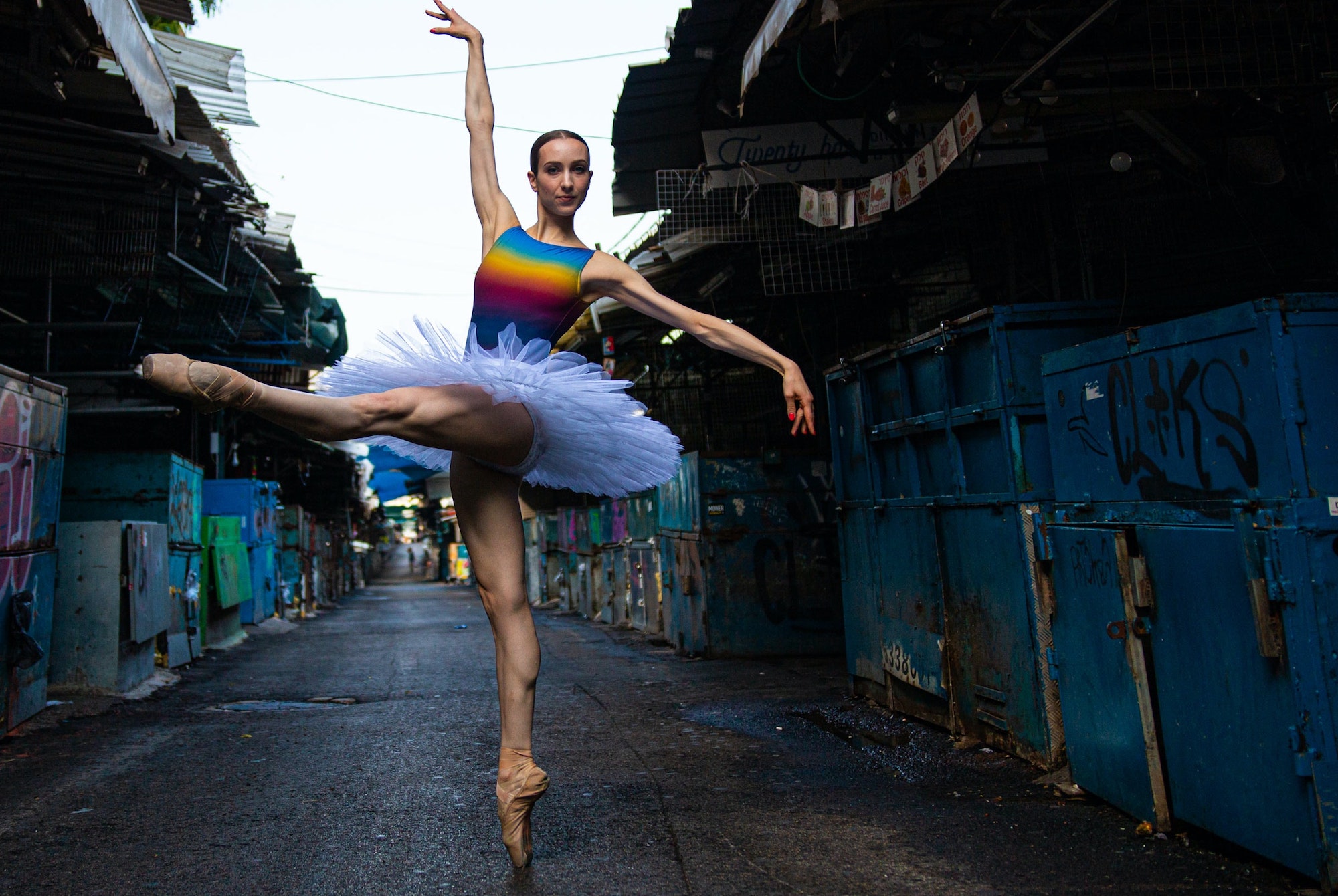
07 Mar How to Make the Most of Your Extension
This may not be the case for our Absolute Beginning Ballet Dancers, but some of our students that have transitioned from other genres or have experience with dance may have gained some ground with the elevation of their leg extensions. Higher leg extensions are an extremely common goal for dancers, as they epitomize some of the greatest moments on stage at our classical ballets (and make for some of the best shots on our social feeds). Some dancers are so wonky they have a hard time supporting their high legs, while others struggle with limited flexibility. But no matter your facility, you can find a balance of stretch and strength to achieve your fullest range of extension. It’s not about how high (or not) your legs can go: It’s the quality of the movement, and how you get those legs up, that counts.
If you’re feeling tight, stretch (but don’t overdo it)
Some dancers just don’t have much flexibility in their hips and back. If you’re one of these people (and most dancers are!), set aside time to stretch each day. Please stay clear of crazy stretches, which are wildly popular on YouTube and Instagram, as it’s easy to pull a muscle or do something harmful. Use good judgment, listen to your body, and push further a little more every day. Consistency is the key, not speed. It’s also a good idea to use your barre as a stretching tool, putting your foot on it and leaning into the stretch. To find the correct, fully extended positions to the front and side, grab your heel and get your leg as high as you can, dropping the hip in the socket and pulling up your standing leg. Then, let go, and hold it up as long as you can. Try to focus on turning out from the tops of the thighs, and avoid pronation in your standing foot by thinking about keeping your little toe on the ground (in other words, don’t let your feet roll in).
You can also use a Thera-Band to help you get those extra few inches of stretch. Try this: Make two loops with the ends of a Thera-Band, and put them around your ankles. On your back, do coupé, then passé turned out, get your knee to your armpit, and extend. Pull gently on the ends of the Thera-Band, so you feel the stretch deep in your muscles—but be careful not to overdo it.
If you’re flexible, maximize your stability
Dancers with tons of flexibility need strength and a solid foundation to support their full extension. Hypermobility is often seen as a blessing and not a curse, but without strength and stability flexibility is a double-edged sword. To gain more control, try resistance exercises with a Thera-Band and focus on placement and endurance in ballet class, or incorporate light weights into class or cross-training. Even if you can reach 180 degrees, you shouldn’t use your max extension all the time. You still need a range, and just because your leg is high, doesn’t mean it’s better. Practice and aim for precision as well, until you know exactly where 45 and 90 degrees are, without having to look in the mirror.
Stand Strong
When the working leg goes high, the standing leg might bend or buckle. Always try to stay aware of this, as it can
be counterproductive and make you lose the strength of the opposition. It’s also technically incorrect in most cases and will lead to bad habits. Think about standing tall on your supporting side, keeping your weight over your toes, and pressing into the floor. This straight, strong bottom leg will help you control even the highest extensions. For an added challenge, try an adagio exercise on a BOSU ball, which will force you to focus on the standing leg and help improve your stability and balance.
